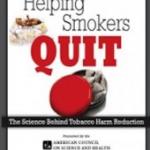Beginning in May of this year, all cigarettes sold in the UK must be packaged to standards regulating material, size, shape, opening mechanism and more importantly with plain packaging.
Harm Reduction
It's only logical to assume that cigarette substitutes that supply nicotine (e.g. e-cigs, nicotine patches, lozenges and such) would provide less or none of the carcinogens that make inhaling cigarette smoke so deadly.
A new study estimates that adding an MRI test - a short-term cost in increasingly stretched government health care budgets - would yield savings because 27 percent of men could avoid an unnecessary biopsy and also reduce over-diagnosis&n
When we check our blood pressure, we usually do it in one arm or the other. But there is a good reason to check our blood pressure in both arms. A large difference in systolic blood pressure between arms – defined as ≥ 10 mm Hg - may be
Smoking is bad. Bad for mom. Bad for unborn and born baby. Now, yet another study reveals its adverse effect on the developing child.
This time the focus is the kidney and the resultant damage.
“An aspirin a day keeps the doctor away” has been the mantra for prevention of cardiovascular disease (CVD) since the early 2000s, but that seems to be changing in some cases.
The United States Food and Drug Administration has informed Swedish Match, the makers of the snus tobacco product, that the product will not be designated as a
It's now almost one year to the day that the Food and Drug Administration publicly recommended that teenagers be prevented from using tanning beds.
One of my extended family members is a former smoker. Nagging him to stop did little good. Warning him against its health dangers produced similarly poor results. He was addicted, and he appeared to like smoking, anyway.
If you are over the age of 50, your doctor has most likely advised you to get a colonoscopy- the gold standard procedure for early detection and removal of growths called polyps, that can potentially turn into deadly colorectal cancer (CRC).












